Lunar Buggy Drawings Easy Landing Pad Drawing
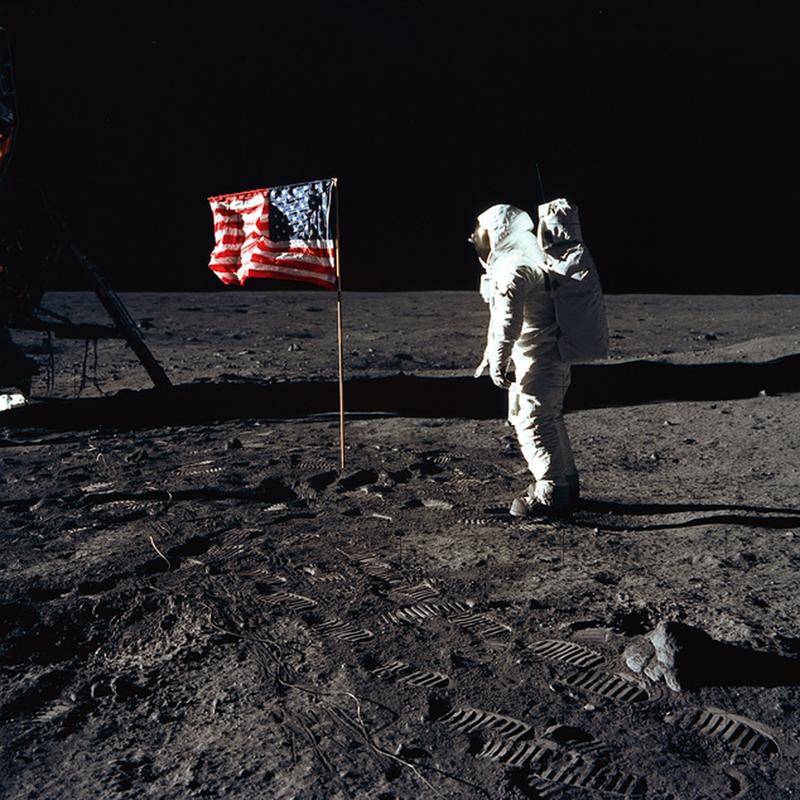
Almost 50 years ago, on July 20, 1969, the spacecraft Apollo 11 safely landed astronauts on the moon's surface for the first time. Neil Armstrong and Buzz Aldrin spent over 21 hours on the moon collecting lunar samples, installing equipment, taking photos and erecting an American flag. By 1970, NASA would send five more manned missions and 10 more astronauts to the moon's surface.
Most historians agree that the Apollo 11 moon landing was one of civilization's greatest achievements. However, there are many who are skeptical that the moon landing ever happened. Let's explore a few of moon landing conspiracy theories, why they're still so popular, and the evidence that's commonly used to support them.
What Exactly Do Moon Landing Conspiracy Theorists Believe?
Moon landing conspiracy theorists believe that the Apollo 11 mission was staged from start to finish and that no US astronauts have ever stepped foot on the moon. The evidence they cite is shaky at best — irregular shadows, the absence of stars in photos taken on the moon, a lunar rock that looks like a prop, and footprints that shouldn't be possible.
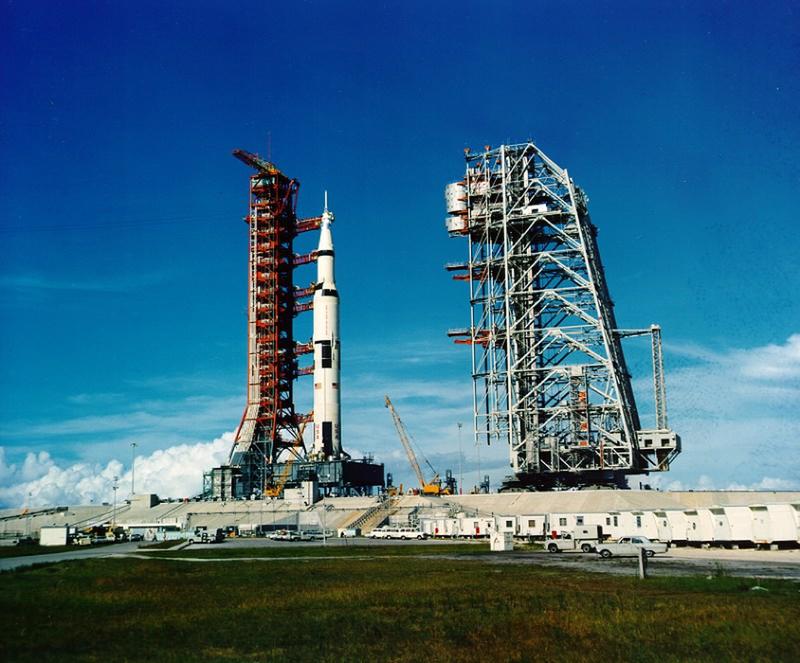
Despite the fact that this evidence can easily be debunked by fact-checking and scientific principles, belief in the moon landing conspiracy has only increased over time.
Bill Kaysing, an employee of the aerospace company Rocketdyne, is considered the originator of moon landing conspiracy theories. Kaysing claimed that during his time with Rocketdyne, he had access to documents that discredited the possibility of a manned mission to the moon.
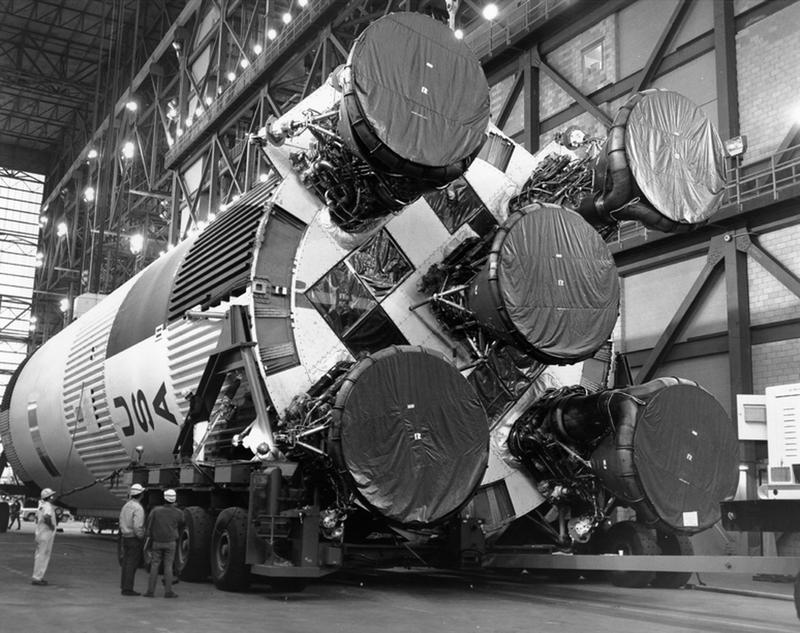
In 1976, Kaysing self-published a book titled "We Never Went to the Moon: America's Thirty Billion Dollar Swindle." In it, Kaysing claims that all of NASA's missions to the moon between 1969 and 1970 were actually staged. The book was later picked up and republished in 2002 by Health Research Books.
Kaysing's Arguments
In the book, Kaysing points to the absence of stars in photographs taken during the Moon landing as evidence that the photographs weren't actually taken on the Moon. Kaysing also questions the fact that the lunar module jets didn't create a visible crater when landing on the moon's surface.
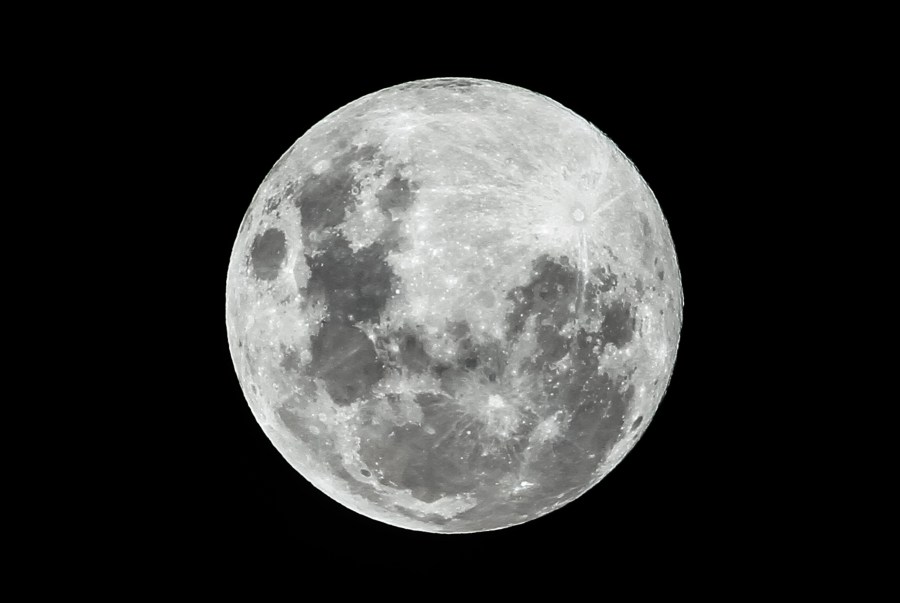
His primary argument, however, centers around the engines used on the Apollo missions' spacecrafts. He claims that the F1 engines used to power the Saturn V rocket were unreliable. According to Kaysing, NASA hid the issue by secretly installing several lower-powered engines in the Saturn V rockets instead.
The Kubrick Connection
One of the more outlandish beliefs held by moon landing hoax conspiracy theorists has to do with director Stanley Kubrick (of all people). Conspiracy theorists believe that footage of the Apollo 11 moon landing was filmed by Kubrick in a production studio in Huntsville, Alabama. They claim that Kubrick spent 16 months filming a fake moon landing after meeting with NASA officials in 1968.
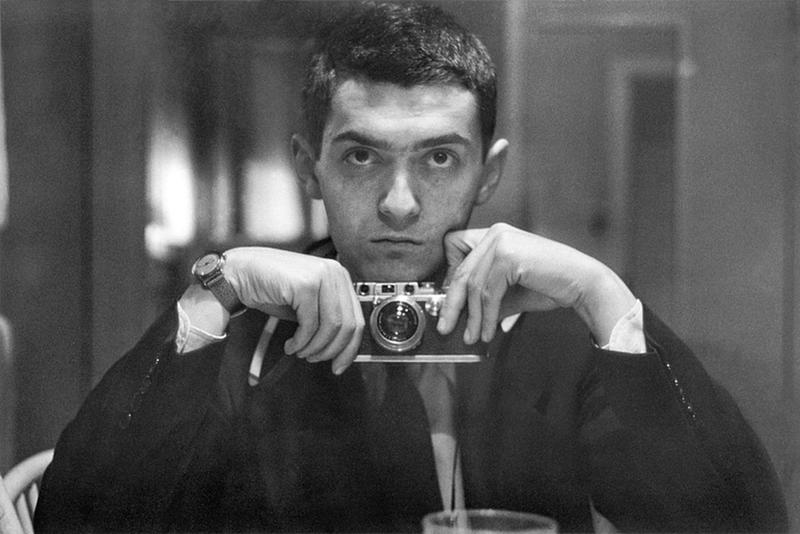
In 2016, Kubrick's daughter released a statement strongly denying these claims, saying, "There are many, very real conspiracies that have happened throughout our history… but, claims that the moon landings were faked and filmed by my father? I just can't understand it!!?"
Why Is This Theory Still so Popular?
While Kaysing's claims have been solidly debunked, his ideas are still cited by moon landing conspiracy theorists today. In fact, the conspiracy has only grown in popularity since the 1970s. A 1999, Gallup poll revealed that 6% of Americans doubted the legitimacy of the moon landing, but research suggests that this percentage has increased in recent years.
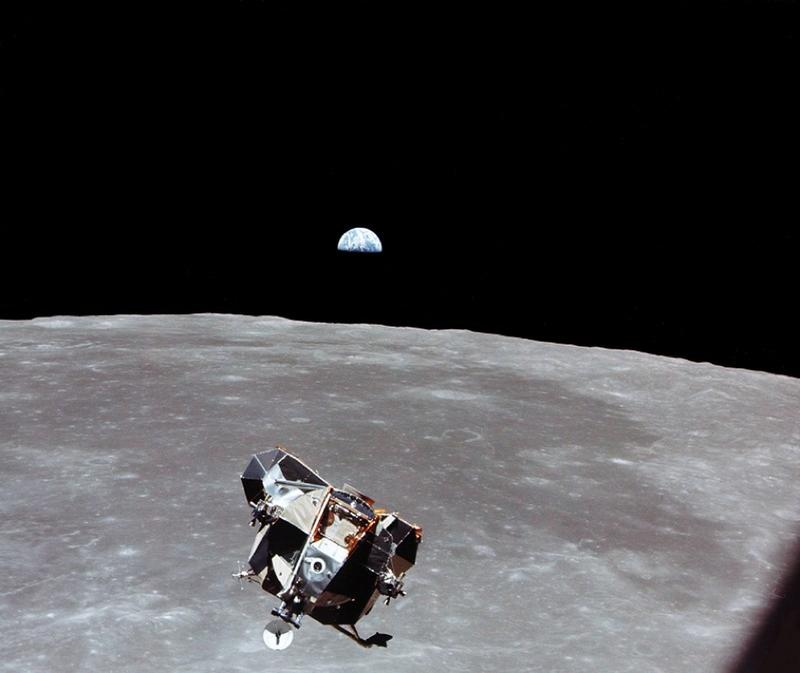
So why is this theory so persistent — growing, in fact? The Washington Post contends that conspiracy theories have always been popular among those who have a desire to feel more "in the know" than others and who want to understand the secret workings of society. Additionally, many theorists have turned to sites such as YouTube, Facebook and Reddit to popularize their views.
Whoopi Goldberg and Marion Cotillard Have Doubts
Celebrities such as Whoopi Goldberg and Marion Cotillard have expressed doubt that the moon landing actually happened. On the 40th anniversary of the historic event, Whoopi Goldberg asked her co-hosts on "The View," "Why is the flag rippling? There's no air. Who shot the footage?"

In an interview with the Huffington Post, Cotillard asked rhetorically, "Did a man really walk on the moon?" and added: "I saw plenty of documentaries on it, and I really wondered. And in any case, I don't believe all they tell me, that's for sure."
Steph Curry Questions the Moon Landings
In 2018, Steph Curry appeared on a podcast hosted by NBA players Vince Carter and Kent Bazemore where he voiced skepticism about the moon landing. Curry first asked everyone, "We ever been to the moon?" before saying: "They're going to come get us. Sorry, I don't want to start conspiracies."

Curry later apologized for his remarks after being invited by NASA to come visit the lunar lab at the Johnson Space Center in Houston. Former U.S. astronaut Scott Kelly also reached out to Curry with a tweet that said: "Steph, so much respect for you, but re the moon landing thing, let's talk. DM me."
The Evidence of a Staged Moon Landing
So how does the evidence stack up? Although people who believe that the moon landing was staged often claim they have ample evidence to prove it, the truth is, the vast majority of this evidence has been debunked.
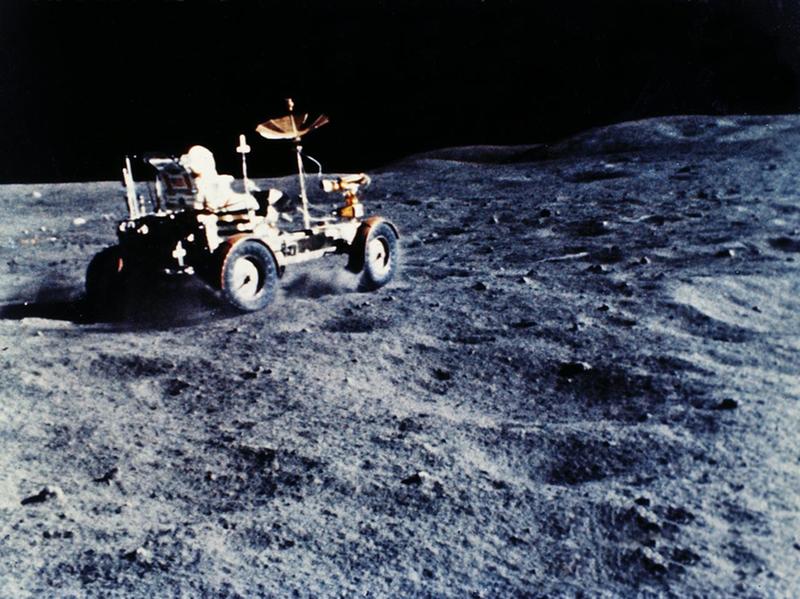
From dangerous radiation and micrometeoroids to mismatched footprints and fake rocks, let's review the evidence used to support these conspiracy theories.
Radiation from the Van Allen Belts
A common argument that conspiracy theorists use to support their position has to do with the Van Allen radiation belts. These belts surround our Earth with a layer of radiation. Theorists claim it would be impossible for the astronauts to pass through the Van Allen belts without being hit by a lethal amount of radiation.
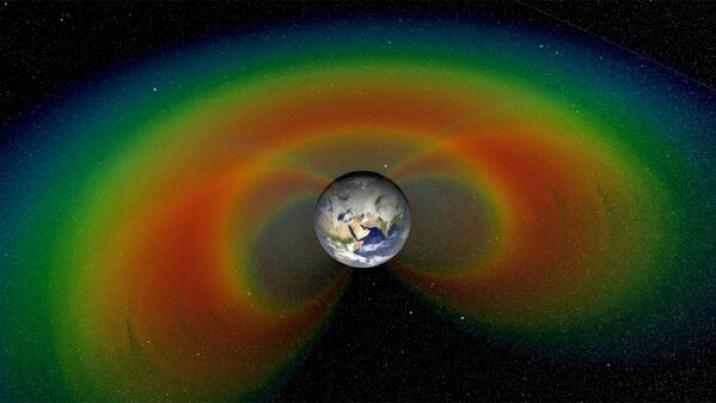
While NASA engineers were aware of the risks that the Van Allen belts posed, they knew that the actual level of radiation was nothing to be worried about. In order for a person to be affected by exposure to radiation, the radiation level must be between 200 and 1000 rads. The Apollo 11 astronauts were exposed to about 13 rads for less than two hours — about the same amount of radiation as getting an X-ray. Additionally, their spacecraft was highly insulated against radiation.
The American Flag
Another popular piece of evidence has to do with the American flag that Armstrong and Aldrin "supposedly" planted on the moon. Conspiracy theorists point out that because there's no atmosphere on the moon, the flag wouldn't be able to sway or move in the wind, as it appears to do in photos.
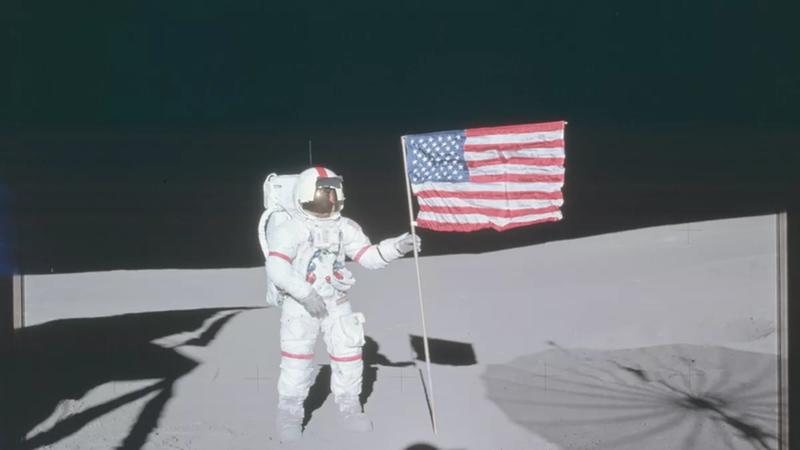
Though frequently pointed to as proof that the whole event was filmed on a set, the real explanation is much simpler. After planting the flag in the lunar soil, Aldrin and Armstrong inserted a piece of metal into the seam of the flag's top edge to give the appearance of wind. With close observation, the outline of the metal piece can be seen in photos from the moon landing.
Why Are There No Stars?
Another point of contention has to do with the fact that there are no visible stars in photos from the moon landing. If there's no atmosphere on the moon to block the view, shouldn't the stars be even more brilliant than they appear from Earth?

The answer to this question may surprise you. Because the landing took place during a lunar sunrise, a great deal of sunlight was reflecting off of the moon's surface. This made it impossible for the camera to capture the relatively faint light from the stars. The same principle applies to photos taken from the International Space Station, which often feature a starless sky.
Irregular Shadows on the Moon's Surface
Many moon landing hoax conspiracy theorists have pointed to strange shadows in photos as evidence that the scene was staged. If light is coming from one source (the sun), shouldn't all shadows fall at the same angle?
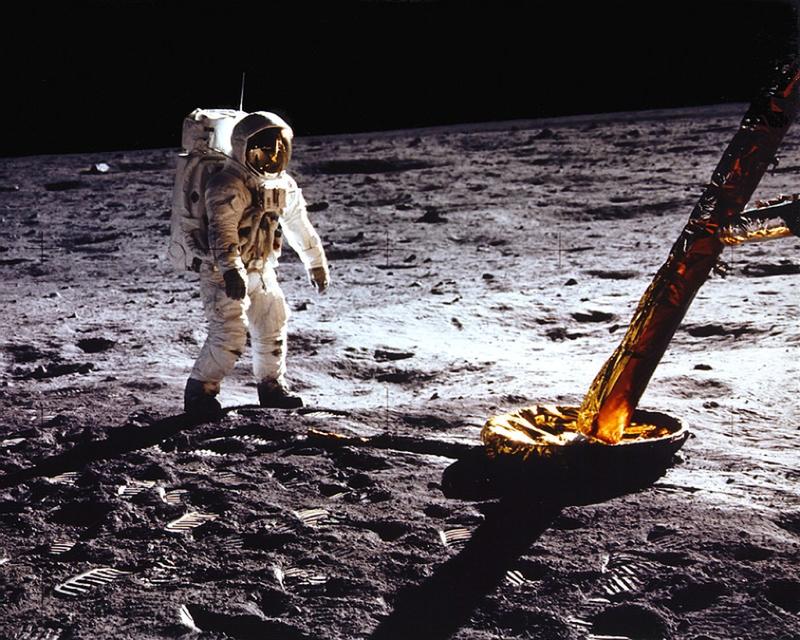
In the photo above, shadows from the astronaut's leg and the moon lander are cast in the same direction. However, there's another shadow cast by the Moon lander stretching towards the astronaut. How is that possible?
While conspiracy theorists insist that this is evidence of a second light source, (such as studio production lighting), it's more likely that the shadow is the result of the moon's uneven terrain and the low position of the sun over the horizon. In these conditions, uneven shadows are normal and expected.
What About the Other Lighting Anomalies?
Still, conspiracy theorists point to other anomalies within the photos to argue that the landing must have been staged. In some photos from the Apollo 11 mission, the astronauts appear to be lit from multiple angles.
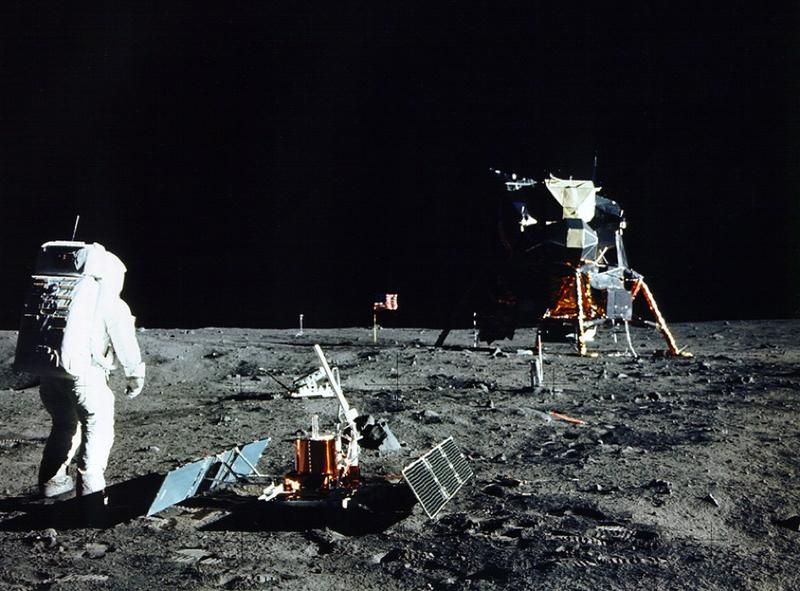
NASA spokesperson James Hartsfield has responded to this claim in the past, saying, "On some pictures, astronauts are lit from more than one side because the sunlight is reflected off the lunar surface or off the landing vehicle."
Is that Rock a Prop?
Much has been made by conspiracy theorists about a rock that appears to be labeled with the letter C. In movie production, props are often labeled with letters or numbers that correspond to where the prop should be placed within the scene. After seeing photos from the Apollo 16 mission in which a rock appeared to have the letter C on it, conspiracy theorists assumed that the photograph included a prop.
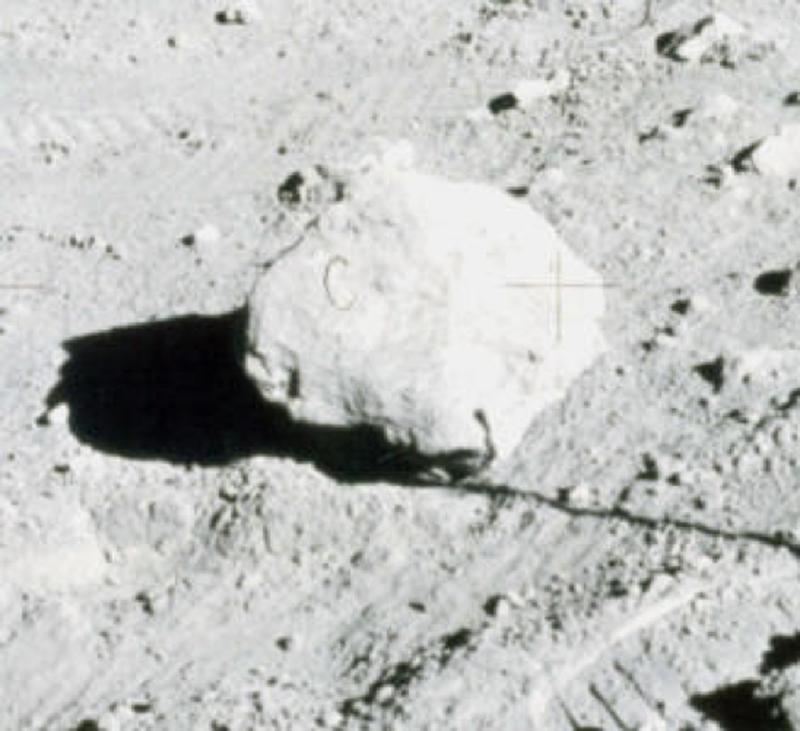
The problem with this assumption is that in other photos from the same mission (and in the original image), the letter C is absent. Because these images were reproduced in the 1970s — before digital technology was available — it's likely that the shape was caused by a speck of dust or hair caught in the copier when the image was reproduced.
The Film Should Have Fried
In full sunlight, the moon's surface can reach temperatures of up to 280 degrees Fahrenheit. Conspiracy theorists assert that there's no way Aldrin and Armstrong would have been able to move around the moon's surface in this high heat — let alone take photographs. At that temperature, the film in their cameras would have melted immediately.
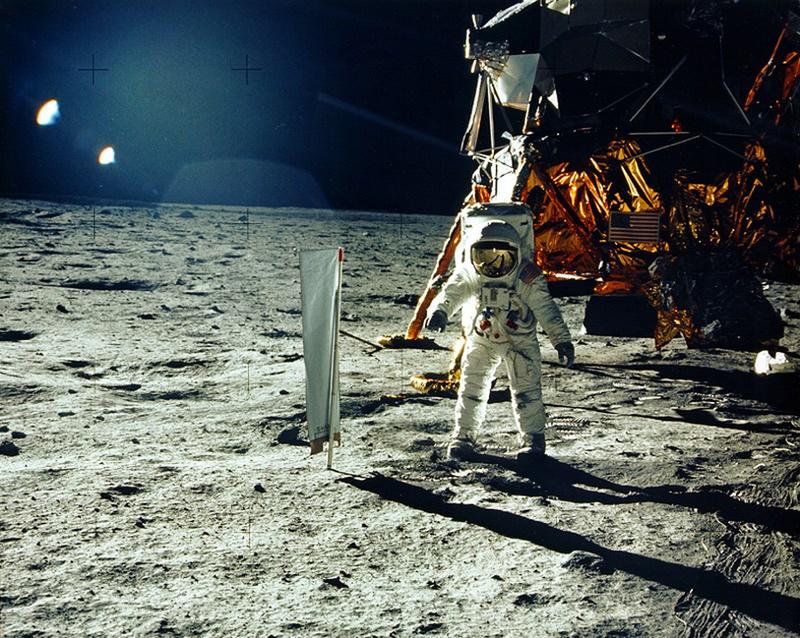
While it's true that the moon can reach extremely high temperatures during the day, the astronauts weren't on the surface during full lunar daylight. The Apollo missions were scheduled so that the astronauts reached the surface at either lunar dawn or dusk, when temperatures are much lower. Additionally, the film was always stored in a protective canister and never exposed to sunlight.
But Who Took the Photos?
Conspiracy theorists have argued that there's no way all the photos of the moon landing could have been taken by Aldrin and Armstrong. Who took the photos of Armstrong coming down the steps of the lunar module? Who took the photos of Armstrong and Aldrin together on the moon? (Selfie sticks weren't a thing back then.) What about the ones of the lunar module as it departed from the Moon's surface?
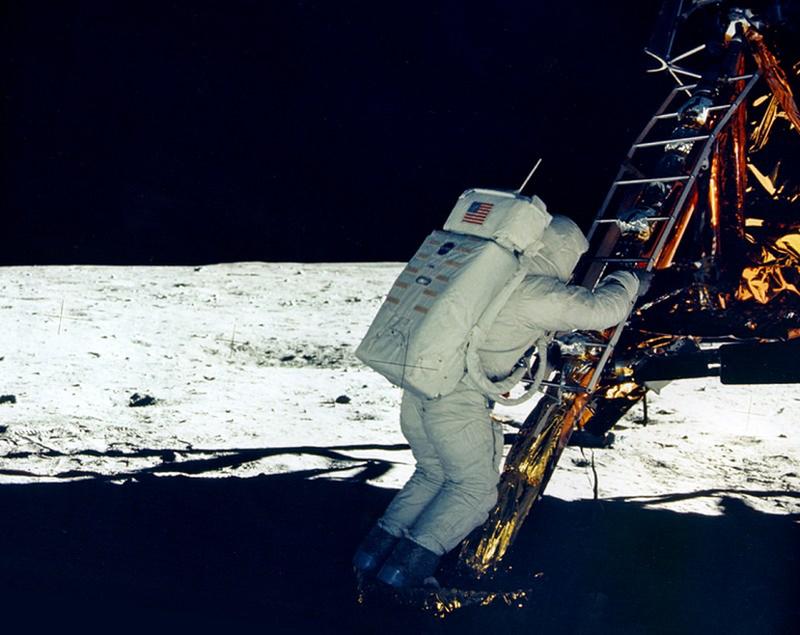
The answers to these questions are simple. The image of Armstrong on the steps of the lunar module is actually a photo of Aldrin, taken by Armstrong. Over the years, the figure in this photo has been misidentified as Armstrong. The photo of the lunar module departing from the moon was taken by one of the many remote cameras left on the moon. The photo of Armstrong and Aldrin together was taken by the lunar module's camera.
Impossible Footprints
Many conspiracy theorists believe that it would have been impossible for the astronauts to leave footprints on the moon's surface. While footprints are clearly visible in photos from the landing, a popular argument among hoax theorists is that moisture is needed to produce a footprint. Because there's no water on the moon, there's no way their footprints should be visible.
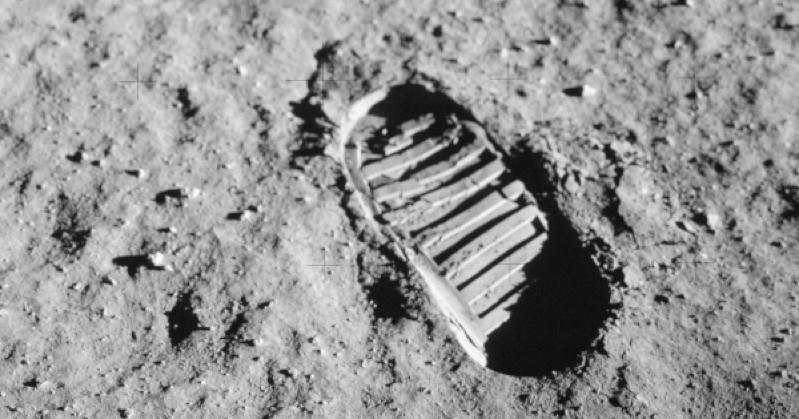
This argument is actually scientifically incorrect. The moon's crust is made of a material called regolith. Regolith is a mix of many different types of sediment of varying sizes, all sitting on a layer of solid bedrock. The regolith in the Sea of Tranquility (where the landing occurred) has been ground into very fine particles. These particles are held together by the friction between them, making footprints possible.
Wouldn't the Astronauts Be Hit by Micrometeorites?
Outer space is full of tiny, fast-moving particles called micrometeorites. These particles travel (on average) at a speed of 22,500 mph and can cause significant damage to anything in their path. Wouldn't it be impossible for a spacecraft to travel any significant distance through space without being hit by one of these deadly pieces of space dust? Wouldn't the astronauts be exposed to them while on the moon's surface?
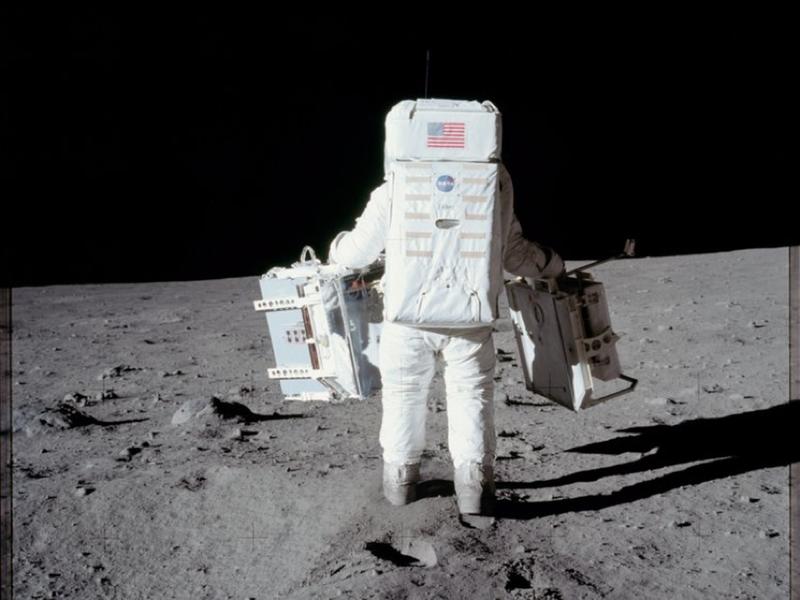
While micrometeorites could pose a danger to astronauts, the truth is that space is too large for a…well, space, for flying particles to be a real threat. Space.com reports, "The chance of any given cubic yard of space having a micrometeor passing through it is incredibly close to zero." Nevertheless, space shuttles are protected from these flying particles by a device called a "Whipple shield" and space suits are lined with kevlar to protect against micro particles.
The Moon Buggy Was Too Big
Starting with the Apollo 15 mission, astronauts were able to travel around the moon's surface using a lunar rover, colloquially called a "Moon Buggy." Astronauts Jim Irwin and Dave Scott used the Moon Buggy to collect geological samples, driving over 17.5 miles across the moon's surface. The Moon Buggy was used again during the Apollo 16 and 17 missions. But…how did such a large vehicle fit into the lunar module? Moon landing hoax conspiracists argue that the Moon Buggy was far too bulky to be transported.
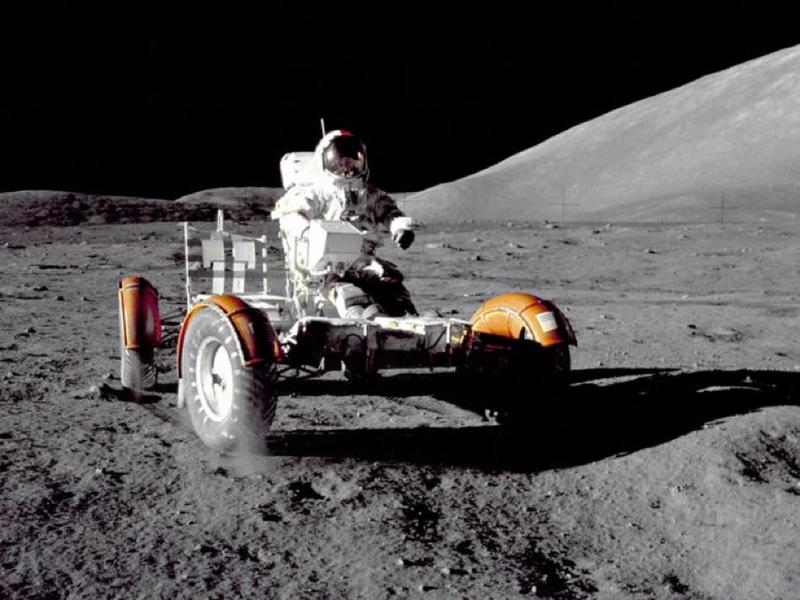
Surprise: The lunar rover was designed specifically to be transported to the moon. It was made of incredibly light materials and only weighed approximately 460 pounds. Once removed from a small compartment of the lunar module, the Moon Buggy was designed to unfold and assemble itself with almost no help required from the astronauts.
Why Is There No Crater Below the Lunar Module?
Many moon landing conspiracy theorists assume that there should be a crater under the lunar module, a product of the force exerted by the thrusters as they lowered the module down to the surface. Surely the thrusters were powerful enough to blast the sediment from the moon's surface out of the way as they approached, right?
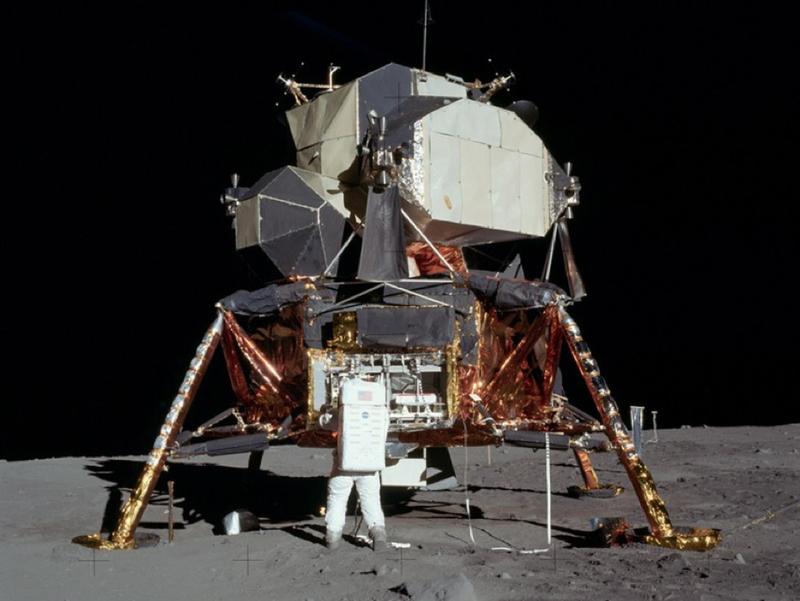
NASA explains that, "Although the descent engine of the LM is powerful, most of its operation takes place thousands of feet above the moon during the early stages of the landing." They go on to explain that because the lunar surface is "relatively cohesive," only a small amount of dust is blown out of the way when the module reaches the surface.
Proof of the Moon Landing
It can be easy to get caught up in the arguments supporting moon landing conspiracy theories. Maybe you think the evidence presented is compelling, and the counterarguments seem flimsy to you. However, it's important to remember that the bulk of evidence solidly supports that it did in fact happen. While many people believe that the landings were staged, there's much more evidence to corroborate the moon landing than there is to dispute it.
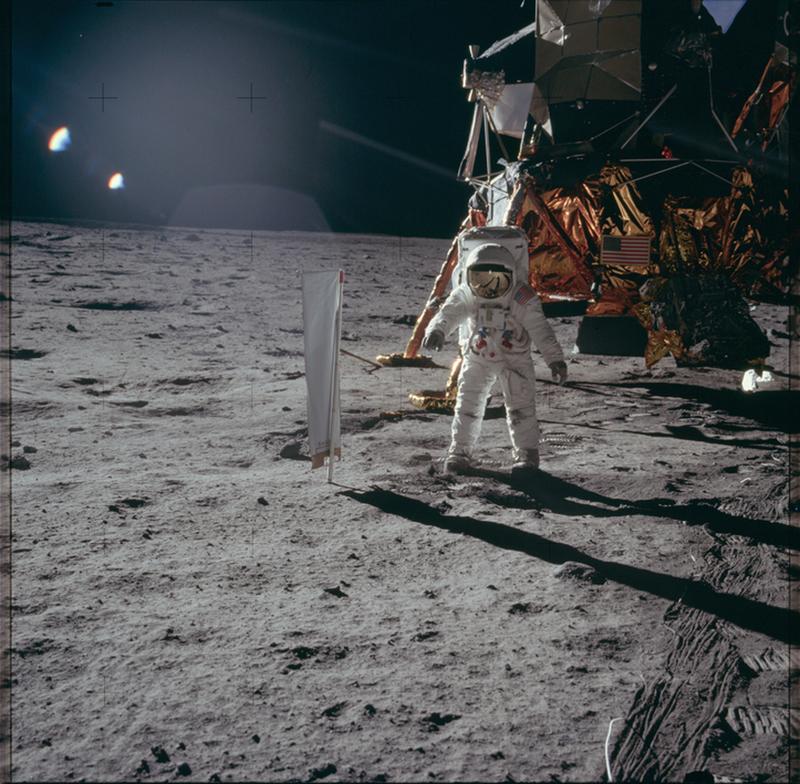
There are multiple ways to authenticate that we've actually been to the moon, including photographic evidence, astronauts' footprints and moon rocks. Let's take a look at some of the hard evidence that the moon landings did in fact happen.
Corroborating Images of the Apollo 15 Landing Site
In 2008, the Japan Aerospace Exploration Agency (JAXA) launched a lunar probe called SELENE as part of their KAGUYA mission. The goals of the lunar probe were to "obtain scientific data of the lunar origin and evolution and to develop the technology for future lunar exploration." SELENE took photos of the moon's topography and stitched them together to create a 3-D visualization of the terrain.
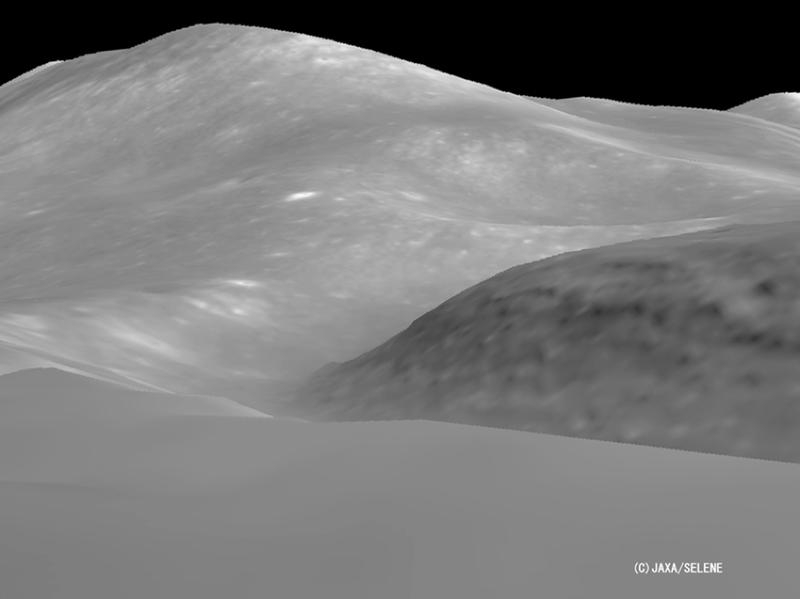
The above 3-D visualization of the Apollo 15 landing site clearly shows topography identical to the photos taken by the Apollo 15 astronauts in 1971. The fact that these two images clearly show the same area, despite being taken decades apart and by different countries, is compelling evidence of the moon landings.
Visible Astronaut Footprints on the Moon's Surface
Thanks to NASA's Lunar Reconnaissance Orbiter, we can actually see satellite photos of the Apollo landing sites. The Orbiter has been in a low orbit around the moon since 2009, taking satellite images and collecting information about the moon's surface and environment.
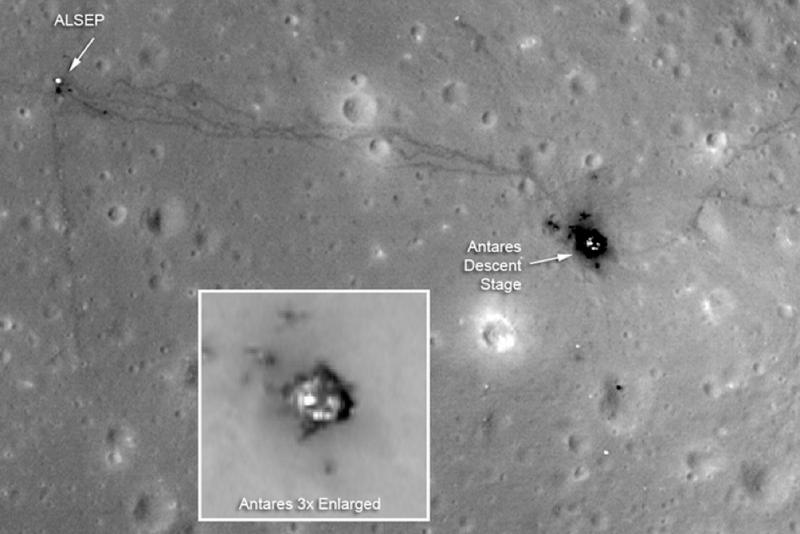
In this satellite image from the Lunar Reconnaissance Orbiter (the Apollo 14 landing site), the footprints of astronauts Alan Shepard and Edgar Mitchell are clearly visible. Shepard and Mitchell took two moonwalks during their visit. This image was achieved by lowering the orbit of the Lunar Reconnaissance Orbiter to just 13 miles above the moon's surface.
We Can Also See Tracks From the Lunar Rover
The Lunar Reconnaissance Orbiter was also able to capture satellite images from other Apollo missions, including ones where the lunar rover was used. In the image below this paragraph of the Apollo 15 landing site, tracks from the lunar rover are clearly visible to the right of the Descent Stage.
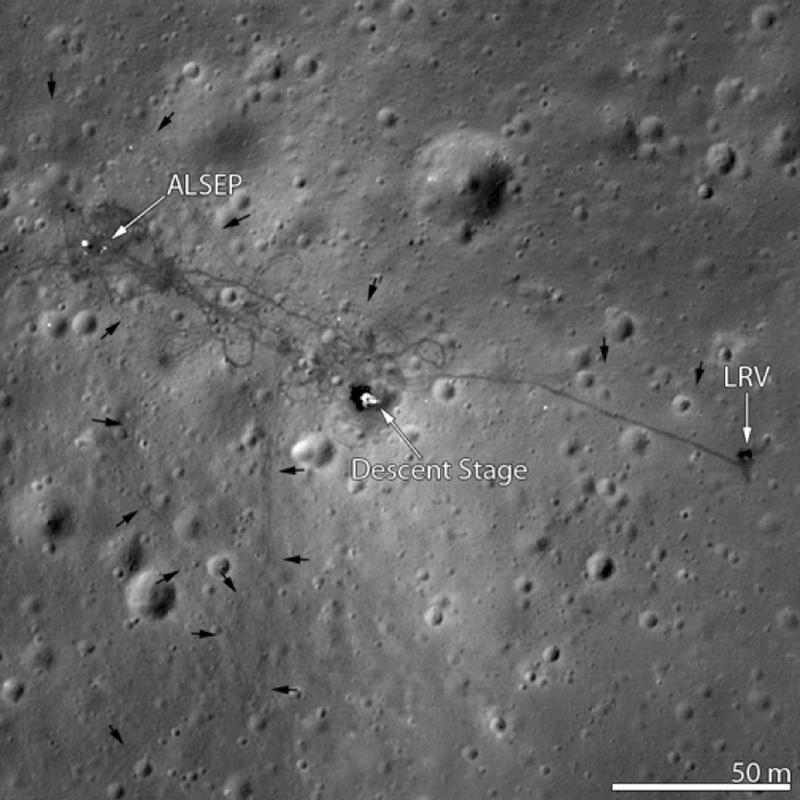
The Apollo 15 mission was the first time the lunar rover was used. While exploring a mountain near a landing site named Hadley Delta, the rover was put to the test on steep slopes with loose sediment. The Moon Buggy was amazingly developed in a short 17 months.
Scientific Equipment Is Stored on the Moon
When the astronauts left the moon's surface, they didn't take everything with them. Armstrong and Aldrin left over 100 items on the moon when they departed, including tools and a commemorative plaque that read, "we came in peace for all mankind."
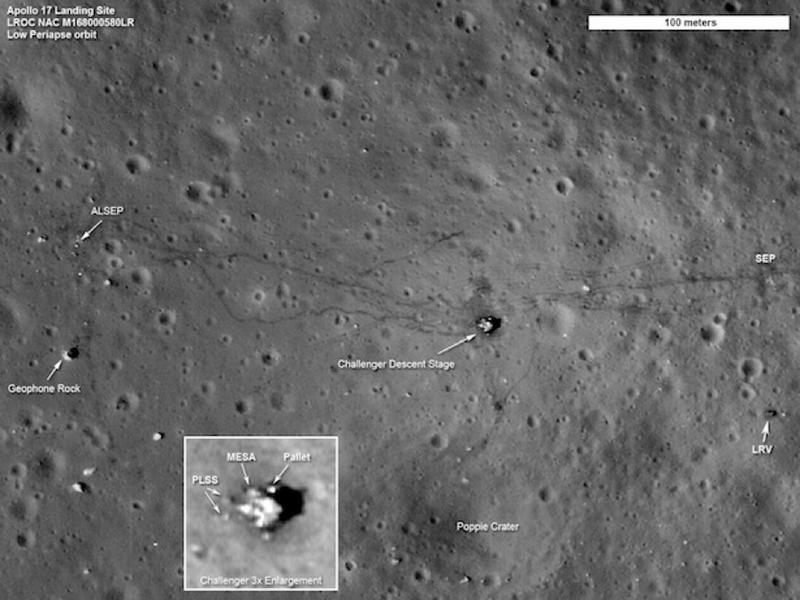
In fact, the debris left behind from astronauts is still visible. In the photo above you can see several items left behind by the Apollo 17 astronauts. Included in this satellite image is the mission's ALSEP (a package of scientific instruments), the Challenger Descent Stage, the lunar rover, the lunar module's ladder and life support backpacks.
Astronauts Brought Home Moon Rocks
One of the more tangible pieces of proof that man walked the moon is in the geological samples brought back to Earth. Over 800 lbs of moon rocks have been brought back to Earth from the Apollo missions.
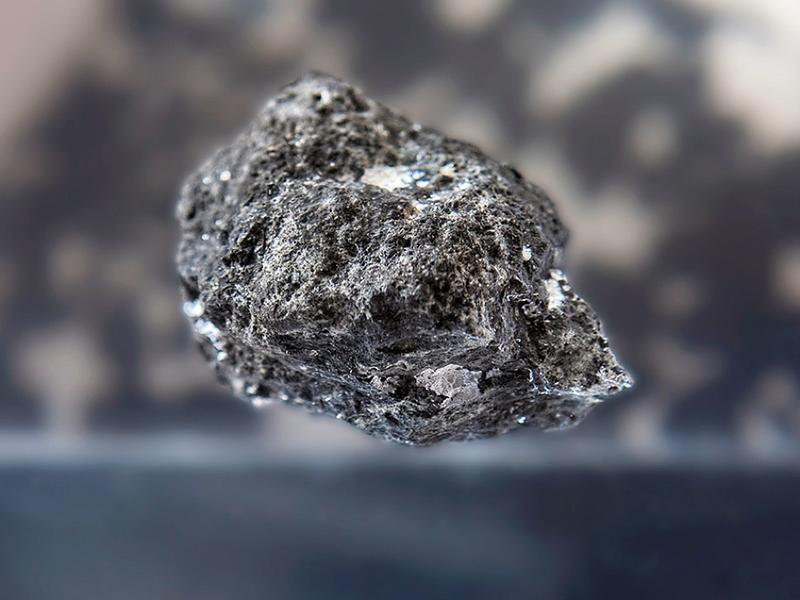
After the Apollo 11 mission, the U.S. gifted 135 countries with pieces of moon rock as a goodwill offering. The samples have been tested rigorously. Additionally, the moon rocks brought to Earth from the Apollo missions have been tested against lunar material brought home by the Soviet Union's Luna space program.
Over 10,000 Photos Document the Trips
Also compelling is the sheer amount of photographic evidence we have of the moon landings. NASA has released over 10,000 photos taken during the Apollo missions on their Flickr account.
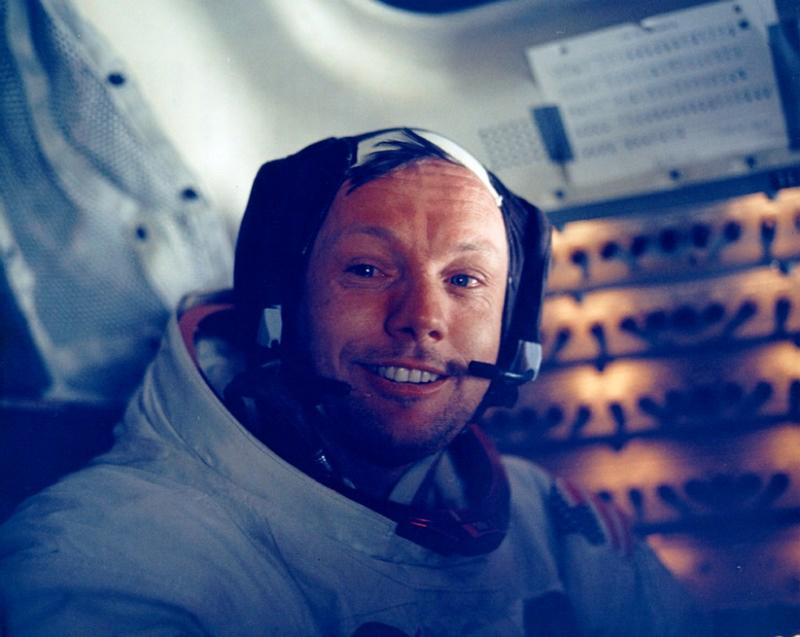
The photos are sorted by roll of film, allowing the viewer to experience the Apollo missions through the eyes of the astronauts who were there. Each image is uploaded at a resolution of 1800 dpi. This treasure trove of images was released in 2016, allowing viewers to see Apollo mission images in high definition for the first time.
Apollo Missions Were Tracked Around the World
Need more proof? How about the fact that the Apollo missions were tracked in real time by a number of organizations and individuals, many of which were not affiliated with NASA. The Apollo 11 mission was tracked by the Jodrell Bank Observatory in the UK as well as by Larry Baysinger, a radio operator in Kentucky.
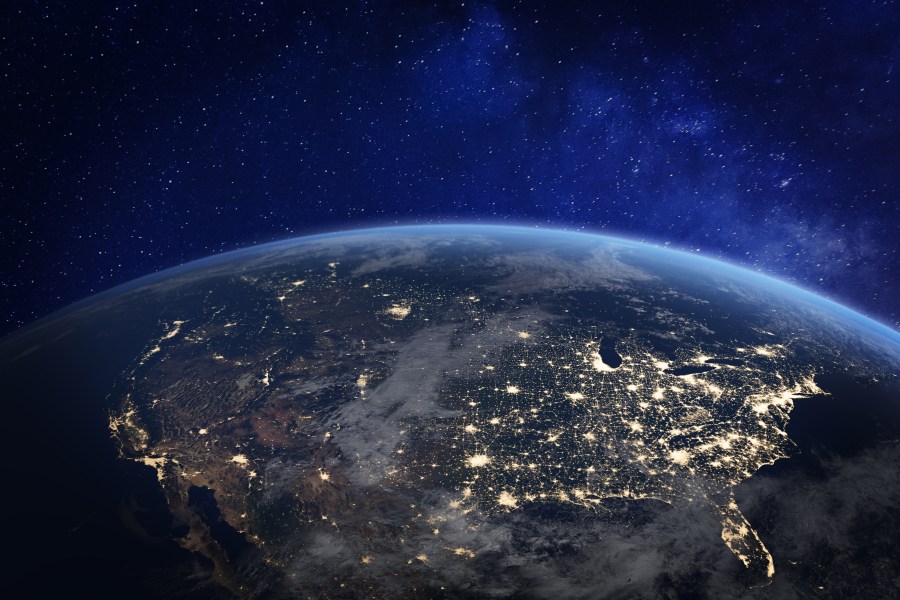
Apollo 16 was sighted independently by researchers at the Washington State University Jewett Observatory. Additionally, Bochum Observatory in Germany recorded the transmissions from the astronauts while they were on the moon's surface.
Will Moon Landing Conspiracies Ever Die?
Since Bill Kaysing's moon landing hoax theory emerged in 1976, the debate about irregular shadows, unreliable engines, radiation levels and micrometeoroids has persisted. Despite the evidence stacked against them, it appears that moon landing hoax conspiracies are here to stay.
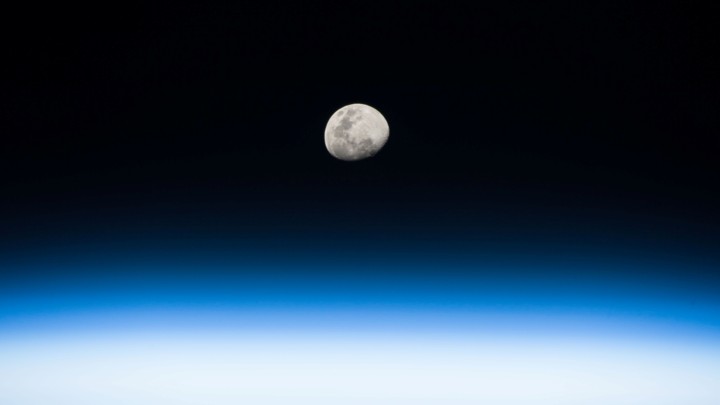
Still have doubts about the moon landing? With the upcoming 50th anniversary of the Apollo 11 mission, now is a great time to learn more about NASA's Apollo program — and the hard work and determination that culminated in one of history's greatest achievements.
Source: https://www.ask.com/culture/moon-landing-conspiracy-theories-an-introduction?utm_content=params%3Ao%3D740004%26ad%3DdirN%26qo%3DserpIndex&ueid=200b05fa-995f-43a5-8a3c-4feb24d0f72a
0 Response to "Lunar Buggy Drawings Easy Landing Pad Drawing"
Post a Comment